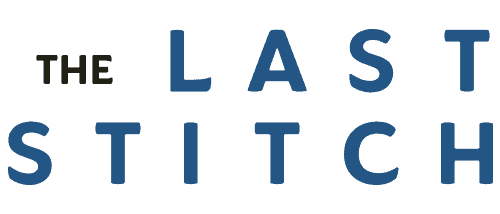
Using fusible interfacings made for knit fabrics is a great way to add structure and stability to your knit garments. There are several knit fusibles to choose from and it is important to pick the right type for each project. So I thought I should do a guide on common knit interfacings and how I use them. I’m personally a big fan of using fusible interfacing for knits, especially since I like to add structured details to a lot of my garments, such as collars, buttonholes and pockets. And to put it bluntly, knit interfacings are pretty much a necessity in those instances for a satisfactory result.
Examples of when fusible knit interfacings can be used
- Collars
- Plackets
- Cuffs
- Pockets
- Necklines
- Sleeveless openings
- Facings
- Hems
- Buttonholes and eyelets

2-way stretch fusible interfacing for knits
This is my favourite knit interfacing, and I always buy a lot when I can find it. It often has a chevron type of knit structure and stretches lengthwise, crosswise and diagonally. This one has never caused me any wrinkled or puckered situations. It is fairly light and gives the perfect amount of stability, especially great on medium to heavier knits.
Vliseline H609 is a version of this interfacing (Amazon affiliate link)
Use
- Facings
- Collars
- Cuffs
- Hems
Don’t use
- Button plackets
- Buttonholes and eyelets
- Anything where you want to eliminate stretch
 Facing stabilised with the 2-way stretch fusible
Facing stabilised with the 2-way stretch fusible

1-way stretch fusible interfacing for knits
This is similar to the 2-way fusible in hand and weight. But it only stretches crosswise (and diagonally) and has a slightly firmer hand too. I use this for button plackets, collars and cuffs on medium to heavier knits, where I want to eliminate stretch in only one direction. Also if you cut it on the bias you will also get a fair amount of stretch. Not as failproof as the 2-way chevron and sometimes I feel it doesn’t fuse as well, but that could be me getting a bad batch occasionally.
Use
- Facings
- Collars
- Cuffs
- Button plackets
- Necklines
- Shoulder seams
- Buttonholes and eyelets (on knits that only has 1-way stretch, by placing the non-stretch direction of the fusible in the stretch direction of the fabric you will stop the fabric from stretching in any direction)
- Pocket openings
Don’t use
- On very lightweight knits as it will change the hand and make the fabric rigid. I also don’t like it on hems
 Cuffs stabilised with the 1-way stretch fusible
Cuffs stabilised with the 1-way stretch fusible

1-way stretch light-weight interfacing for knits
This interfacing is very similar to regular featherweight fusible interfacing. It only stretches crosswise and is so thin that it doesn’t change the hand of the fabric much. Best for interfacing the second, underlying layer, of the fabric as this interfacing is the most likely to be distorted when stretched out a lot, especially on spandex knits. But smaller areas such as buttonholes are usually fine. You can also cut strips on the bias for just a smidgen of stability when needed.
Use
- Facings
- Collars
- Cuffs
- Button plackets
Don’t use
- Eyelets
- Avoid big areas on outer layers of fabrics, especially if the fabric is thin
 Buttonhole stabilised with non-woven 1-way stretch. The non-stretch side is placed in the same direction as the buttonhole.
Buttonhole stabilised with non-woven 1-way stretch. The non-stretch side is placed in the same direction as the buttonhole.
Iron-on bias tape with reinforcement
If you need to stabilise necklines, sleeves openings and other rounded or diagonal edges, but also want to retain some stretch this is the best product among fusibles. The strips are cut on the bias but thanks to a chain stitch in the middle (which also works as a stitch guide) this tape is the perfect combination of stretch and stability.
Use for
- Necklines
- Sleeveless openings
- Shoulder seams (if you want them to stretch a little)
 Sports lycra knit neckline stabilised with bias iron-on tape
Sports lycra knit neckline stabilised with bias iron-on tape
Brand names
Vlieseline bias stay tape (Amazon affiliate link)
Some suggestions on pressing knit fusible
Use dry heat (unless stated otherwise) and always do a sample. When fusing on synthetic knit fabrics you might need to lower the temperature a bit, otherwise, the fabric might be ruined. Around 10 seconds is enough and let the fused piece set for at least 30 minutes. But I actually like to fuse and leave it until the next day as per an advice I was once given by a very knowledgeable person.
Final thoughts
Hope you found this guide was useful. Of course, there might be more knit fusibles out there, but these are the ones available in Sweden and I assume that it doesn’t differ too much from country to country. And if you are new to using fusibles with knit fabrics I highly recommend that you try it, as they can vastly improve the outcome, especially if you are sewing more structured knit garments.

This post contains Amazon affiliate links, meaning that a commission is earned from qualifying purchases.



